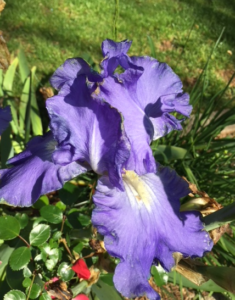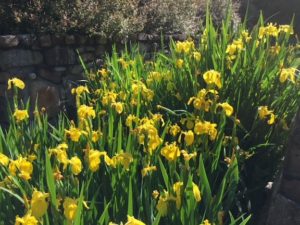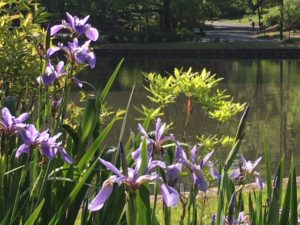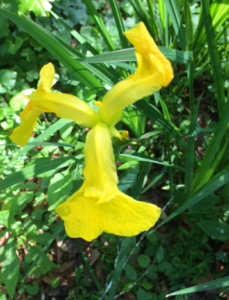 Actually irises are both goddesses AND bearded ladies. This beautiful flower was named for Iris, Goddess of the Rainbow, whose took messages of love from heaven down to earth, using the rainbow as a bridge. The word “iris” actually means “eye of heaven” and is the name given to the goddess, this flower and the center of your own eye, meaning each of us carries a bit of heaven within us.
Actually irises are both goddesses AND bearded ladies. This beautiful flower was named for Iris, Goddess of the Rainbow, whose took messages of love from heaven down to earth, using the rainbow as a bridge. The word “iris” actually means “eye of heaven” and is the name given to the goddess, this flower and the center of your own eye, meaning each of us carries a bit of heaven within us.
The iris has been an important symbol to the French since 496 CE. At that time, Clovis I was fighting an important battle. Though he thought his army was trapped, surrounded by water on three sides, legend tells us that Clovis looked out and saw yellow flag irises growing and realized that the water was shallow enough for escape. From this episode, he adopted the iris as his special emblem and eventually it became the basis for the French fleur-de-lis.
The oldest record of iris is from Egypt in 1479 BC when Thutmose III returned home from war and had irises painted on the walls of the temple to commemorate his victories.
Today the single greatest use of iris (other than for its garden beauty) is in the manufacturing of cosmetics. In Mexico, Iris florentina is grown extensively for this purpose and many tons of the root are shipped to France annually.
There are over 200 different species of iris, many of which are bearded ladies. Half the petals stand upright, half fall, or point downward and the fuzzy beards appear on these falls. Bearded irises, some of the most beautiful of all garden plants, come in every color except true red. These grow from rhizomes, which should be dug up and divided every three to four years. Fertilize with organic feed early and spring and cut back the leaves to within 4 – 5 inches of the rhizome in fall. These bloom best in full sun.
Beardless iris differs from the bearded in that the petals are all more horizontal, rather than vertical. It is clean shaven (lacking a beard) and has smaller blossoms and leaves that are more narrow. These are generally easier to grow than the bearded types and will thrive in sun or partial shade.
